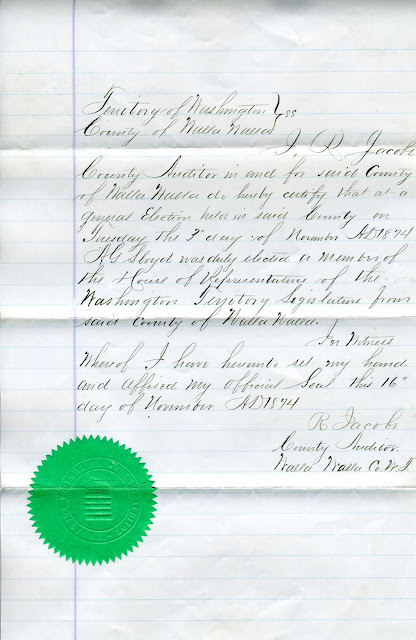#7-2021 Unusual Source. The Cemetery card
The first unusual source in my search for ancestors was a cemetery card from the East Harrisburg Cemetery, in Harrisburg, Pennsylvania.
This was my “first” genealogy research trip! I attended a genealogy conference in Harrisburg, the home of many of my ancestors. I was a bit apprenshive about this trip as I had never been to Pennsylvania and tackling research in a “foreign” area. I was very lucky to have friends in Reading, Jay & Gracie Wolfe, who met me at the plane and toured me around Harrisburg. I had a list of addresses where the Shaffner family had lived and Jay graciously drove me!
One of the sites I wanted to see was where my great great grandparents, Gabriel Shaffner & his wife Margaret were buried in the East Harrisburg Cemetery. My cousin Donnee Shaffner Stibal has listed where he was buried but never a picture of his headstone. Jay stopped at the cemetery office so I could get directions, Luckily the office was open, whether I knew that at the time or not, I don’t remember. The clerk was very helpful and copied every cemetery card with the name Shaffner! And Shaffner is a very common surname in Pennsylvania. She handed me a map of the cemetery & gave me to directions to Shaffner plots.
Gabriel and his wife Margaret's headstone.
It was leaning that day in 2005, probably fallen over by now.
A cemetery card was a new genealogy resource for me. As I was going through them, one name caught my attention. The name of my grandfather’s mother, Elizabeth Deborah Fletcher! Why was that exciting to me? Because I never knew where she was buried! Grandpa Shaffner never had mentioned that and Donnee had never recorded that information. I find it unusual that Grandpa Shaffner had never written about where his mother was buried. Grandpa Shaffner, John F. Shaffner, had written so much about his family, but never a word about his mother’s burial.
Elizabeth Deborah Fletcher Shaffner
(1858-1899)
There was the information on the cemetery card! Elizabeth Deborah Fletcher Shaffner was buried in her father in law’s plot. No headstone!
Elizabeth Deborah Fletcher died in 17 November 1899. My grandfather was 12 years old when his mother died. There were 3 other siblings, one a new born baby. And then his father, John Martin Shaffner, remarried in 1900. And he is buried with his second wife. But why not a headstone? Perhaps money was an issue.
Not only did I learn where Elizabeth was buried, but also John Martin Shaffner.
I wonder why my grandfather never wrote about the funerals or burials. And then I realized that his mother was buried on 18 November 1899 and his son, Don, my father was born on 18 November 1919.

















